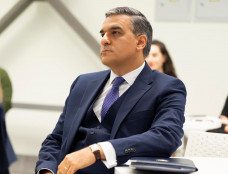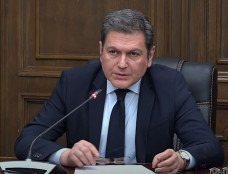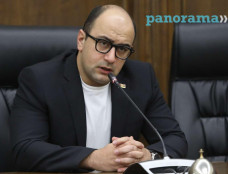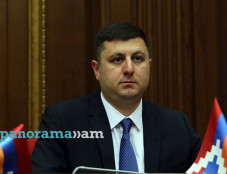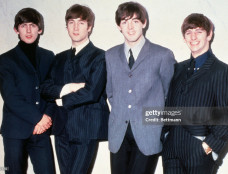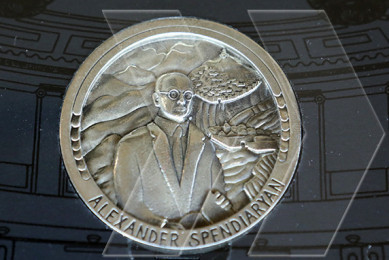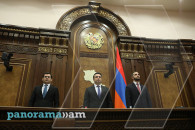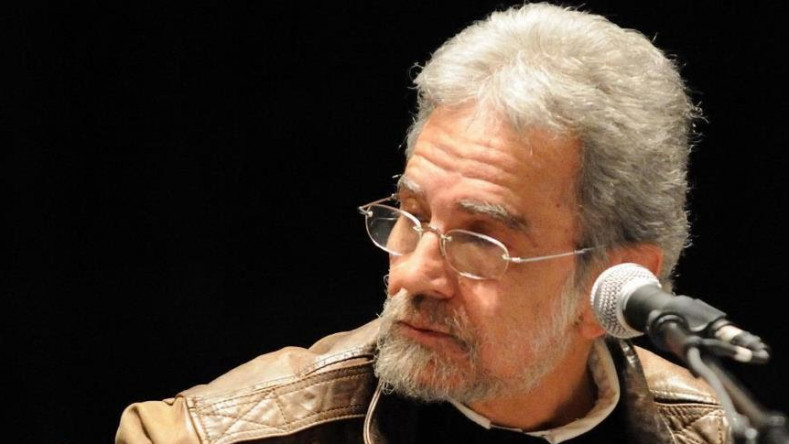
Arthur Meschian named Yerevan’s new chief architect
Arthur Meschian, a popular Armenian rock musician, singer, composer, artist and architect, has been appointed Chief Architect of Yerevan.
The decree on his appointment will be issued on Monday, Meschian told Panorama.am on Sunday, adding he will take full range of duties on the same day.
The majority of Facebook users have hailed the appointment as the best gift to Yerevan on its 2800th anniversary celebrated on Sunday.
Meschian says he has no social network accounts, but such opinions further increase his responsibility as the city’s new chief architect.
Born on March 3, 1949 in Yerevan, Meschian is also known as one of the founders of Armenian rock. He was the founder and the lead singer of Apostles (1968-1979), the first rock band performing songs in their native language in the history of the Soviet Union. He is the author of different architectural projects, including Guest House and the new building of Matenadaran in Armenia.
Since childhood, Meschian has been interested in music and arts; singing songs in languages ranging from Hungarian to English. At the age of seven, he started taking violin and piano lessons at the music school named after A. Spendiaryan. It was during those years when he made his first steps in writing songs and joined the boy’s chorus at the National Academic Theater for Opera and Ballet. In 1973, he briefly joined the chorus of the Mother See of Holy Etchmiadzin. Even though his stay was short (less than a year) in the chorus, it had a profound influence on his subsequent musical creations.
While still at school, Meschian wrote some of his early masterpieces including “Where were you, God?,” “The Will,” and “The Old Man.” In 1965, he first performed his well acclaimed and widely controversial “Where were you, God?” in the auditorium of No. 122 Secondary School where he was a student at the time. In 1966, he got accepted to the department of architecture at the National Polytechnic University of Armenia.
In 1967, Meschian, along with his friends Levon Melikian and Gregory Nalbandian, founded a rock band which they initially did not give a name. The band was simply referred to as “The Band of the Department of Architecture.” After giving a series of concerts throughout 1967 and on, the band gained an immense deal of acclaim among the youth. By blending Armenian spiritual music with the thriving rock of the time, the band left a remarkable impression on its listeners and became a true revelation. As a result, the activists at the Communist Committee raised concerns about the band’s prolific endeavors. The committee led an anti-Meschian campaign accusing him of anti-Soviet propaganda and calling the band members “Newly Ordained Apostles.” It was, in much part, due to the name calling, that the band was later named “The apostles.”
The remarkable success of the Apostles was not hindered by anti-Meschian Communist efforts. In early 1970’s, Meschian composed the first Armenian rock opera, “The Insane Asylum” which vastly contributed to the band’s publicity. Thereafter, the band started giving concerts in numerous universities and cities such as Gyumri, Moscow, Yerevan and Tallinn. In 1971, Meschian gave an outstanding performance in the USSR festival for young musicians in Poland, where the band was only allowed to participate under the guidance of the Communist Committee Activists. Despite the fact that the Apostles found themselves performing in various republics throughout the Soviet Union, they always remained loyal to performing in their native Armenian.
In 1989, Meschian, along with his family, moved to Boston, where he finally managed to properly record his songs. In 1990, he started performing in places such as the Armenian Church of Boston, the center of Armenian Relief Fund and The Wilshire Ebell Theatre. In 1990, he recorded his first album called Catharisis. In addition, he formed a new band called Apostles 90 with Wayne Johnson on the guitar, John Leftwich on the bass and Art Rodrigues on the drums. In 1993, Meschian released yet another album called The Monologue of the Insane Violinist, and gave a series of concerts with Apostles 90 in Pasadena, CA. In 1995, Meschian released two other albums; Wander, which included a couple of songs from the Requiem and Communion which he deems the pinnacle of his musical career. In 1996 He first performed the Communion at the First Church of Nazarene in Pasadena. Later in the same year, his Communion was performed four days in a row at the National Academic Theater for Opera and Ballet in Yerevan.
In 2001, Meschian released his hit collection featuring four CDs encompassing “The monologue of a Crazy Violinist,” “Catharsis”, “Catharsis 2” and “Communion.” In 2003, he gave a concert at the Kodak Theater (now Dolby Theatre ) where he presented his new songs, and performed the Sayat Nova piece. In 2005, after living in the United States for 17 years, Meschian and his wife returned to Armenia. There, he gave a series of concerts which were highly esteemed and appreciated by both the general public and his long term fans who had been loyal to his art since the Soviet times.
In 2007, the construction of the new section of the Mesrop Mashtots Institute of Ancient Manuscripts begins under the guidance of chief architect Arthur Meschian. He worked very hard to finish the project before schedule in 2011. Notwithstanding his busy schedule, Meschian managed to give yet another concert tour in 2009. He performed in Yerevan, Moscow, and Pasadena LA. In 2015, architect Meschian finished yet another project. This time, he designed and conceived the first newly-built museum of Komitas in Yerevan, Armenia.
In 2011, Arthur Meschian was awarded with the Mesrop Mashtots Medal. In 2012, he received the golden medal of the Armenian Ministry of Urban Development. In 2013, he was awarded with the state award for his Matenataran project.
Newsfeed
Videos






